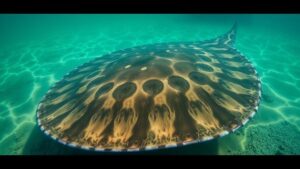Exploring the mangroves in search of saltwater crocodiles and their habitats.
Exploring the Mangroves in Search of Saltwater Crocodiles and Their Habitats
The mangrove ecosystem stands as a unique combination of land and sea, teeming with biodiversity, including the formidable saltwater crocodile (Crocodylus porosus). These habitats, characterized by saline coastal wetlands, are home to a plethora of wildlife, but the saltwater crocodile reigns supreme among them. In this article, we will delve into the intricacies of mangrove ecosystems, the habitat of saltwater crocodiles, and the importance of preserving these vital environments.
The Importance of Mangroves
Mangroves are crucial for both ecological health and human livelihood. Covering approximately 15 million hectares globally, these coastal forests serve several essential functions:
- Acting as nurseries for marine species
- Providing a buffer against storm surges and coastal erosion
- Sequestering carbon to mitigate climate change
Recent studies indicate that mangrove forests can store up to five times more carbon than terrestrial forests, making them key players in combating global warming.
Saltwater Crocodiles: The Apex Predators
Saltwater crocodiles are the largest living reptiles, with adult males often exceeding lengths of 20 feet. They are found across several regions, from Southeast Asia to the northern coast of Australia. Their adaptation to a variety of environments, including the brackish waters of mangroves, is a testament to their resilience. r diet consists primarily of fish, birds, and crustaceans, but they are also known to prey on larger mammals.
The Habitat of Saltwater Crocodiles
The saltwater crocodile thrives in mangrove ecosystems due to several factors:
- Brackish Water: These reptiles have specialized salt glands that allow them to excrete excess salts, making them well-suited for habitats where fresh and saltwater meet.
- Dense Vegetation: The complex root systems of mangroves provide excellent cover for nesting and ambushing prey.
- Ecosystem Support: Mangroves are rich in biodiversity, which supports the food chain, ensuring a plentiful supply of food for saltwater crocodiles.
Real-World Encounters
For those seeking to observe these magnificent creatures, areas such as Kakadu National Park in Australia or the Sundarbans in Bangladesh serve as prime locations. Kakadu, a UNESCO World Heritage Site, hosts a population of saltwater crocodiles that thrive in its vast wetlands and mangrove areas. Visitors can engage in guided boat tours where expert guides share insights into crocodile behavior and habitat, providing an educational yet thrilling experience.
Conservation Concerns
Despite their adaptability, saltwater crocodiles face numerous threats. Habitat destruction due to coastal development, pollution, and climate change has significant impacts on their populations. According to the International Union for Conservation of Nature (IUCN), saltwater crocodiles are listed as Least Concern, but localized threats could change their status in specific areas.
Conservation efforts are vital. Programs aimed at protecting mangrove habitats indirectly benefit saltwater crocodile populations. Initiatives like reforestation of mangroves and marine protected areas not only help conserve biodiversity but also ensure the survival of iconic species like the saltwater crocodile.
Actionable Takeaways
As we continue to explore mangrove ecosystems, it is imperative to contribute to their conservation. Here are some ways to help:
- Support organizations dedicated to mangrove conservation.
- Participate in citizen science projects that monitor wildlife populations.
- Be an informed traveler; choose eco-tourism options that prioritize environmental stewardship.
To wrap up, the mangroves are vital ecosystems that support the lives of saltwater crocodiles and countless other species. Understanding their habitats not only enriches our knowledge of wildlife but also emphasizes the need for their ongoing protection. By engaging in responsible conservation efforts, we can ensure that these breathtaking environments continue to thrive for generations to come.



